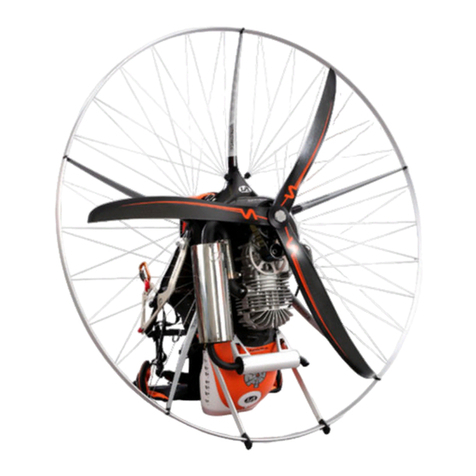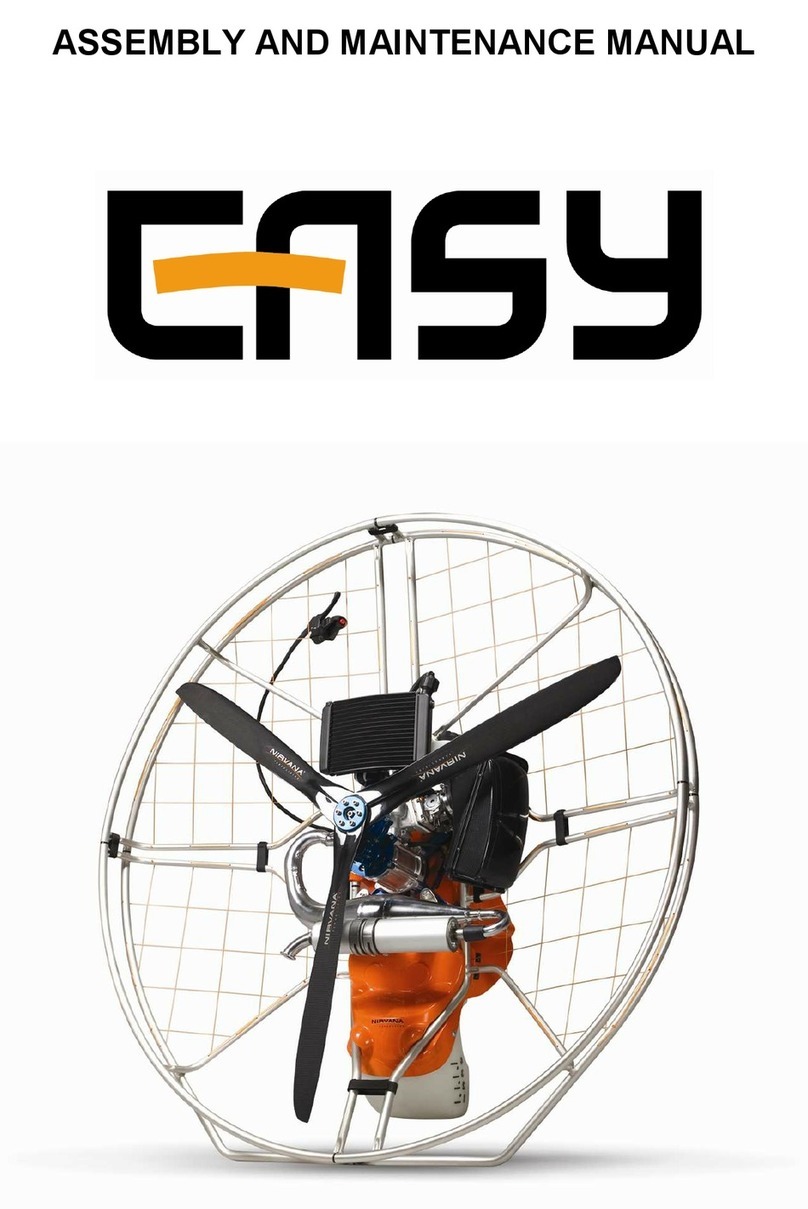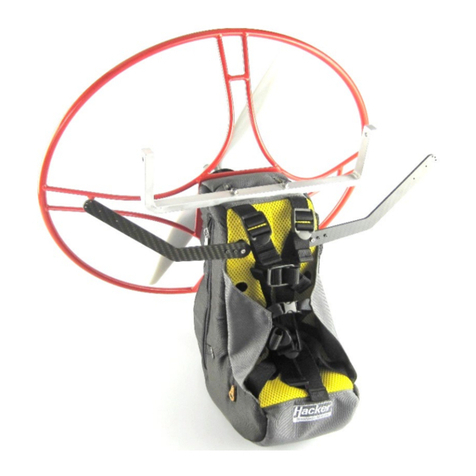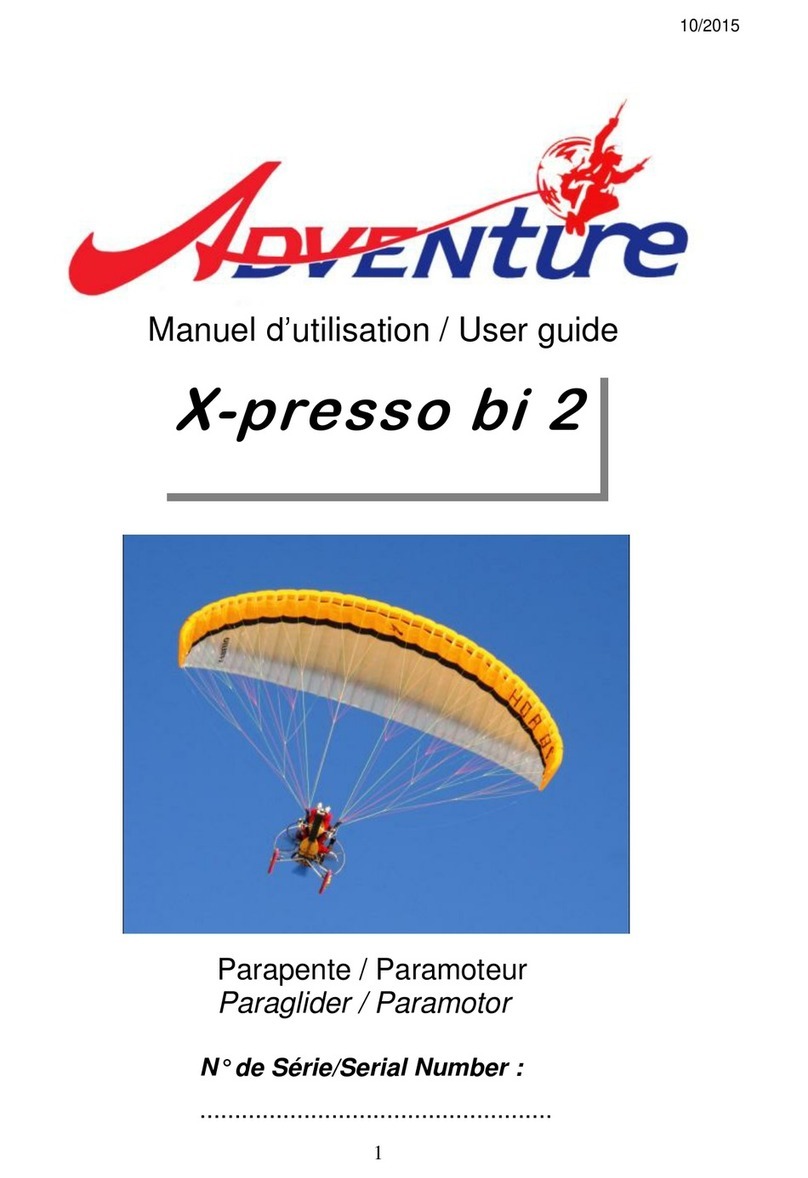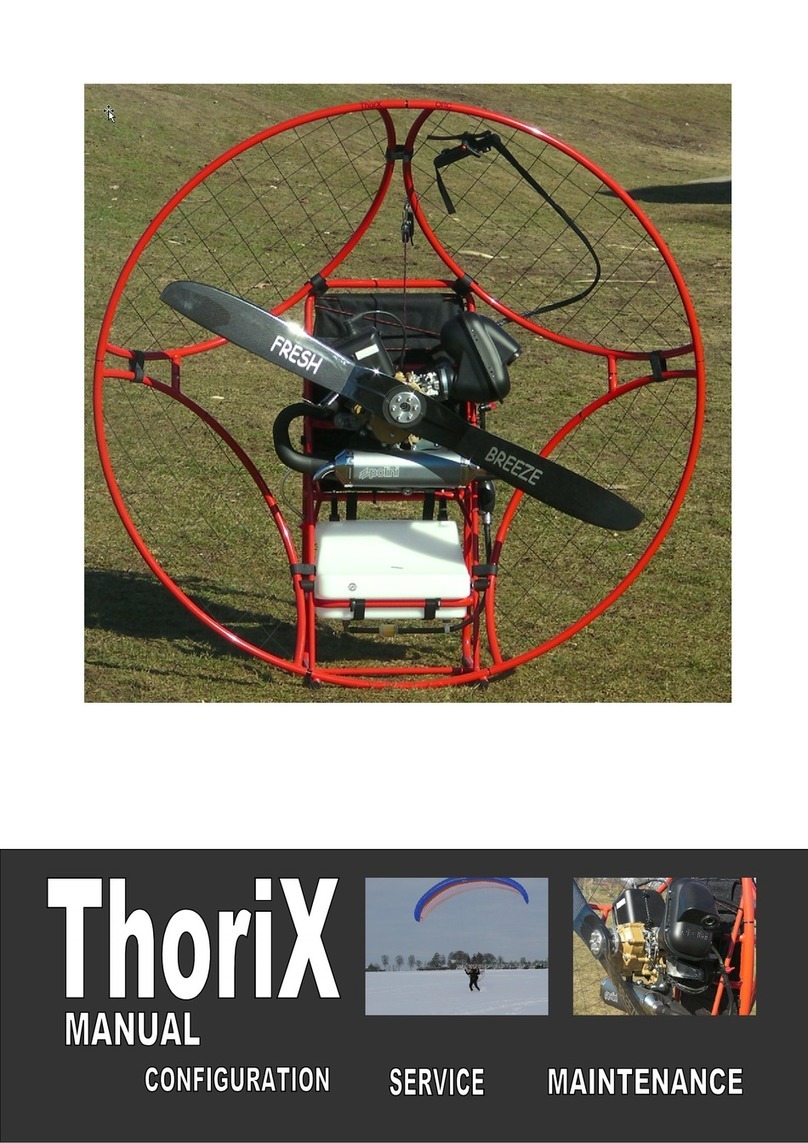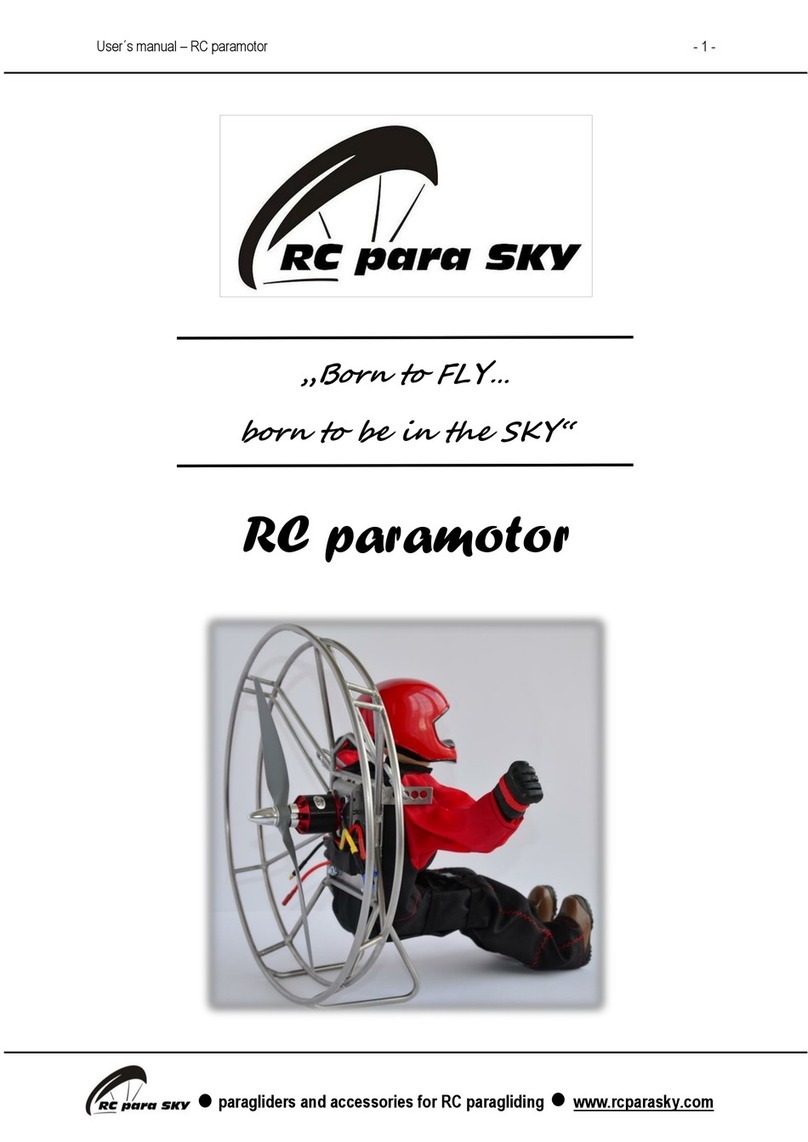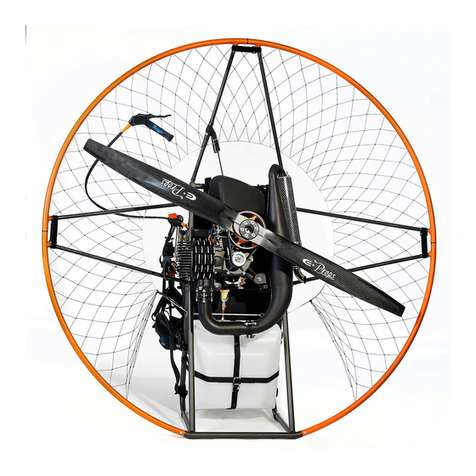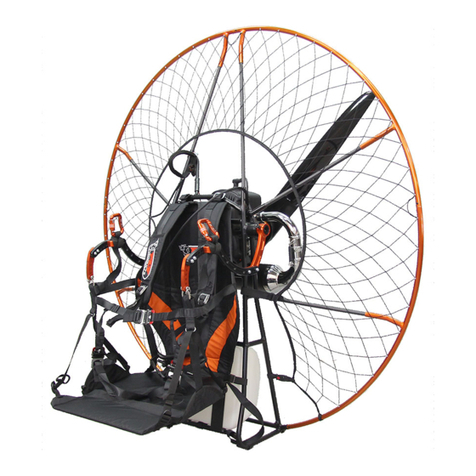Nirvana TOP 80 Quick guide

ASSEMBLY AND MAINTENANCE MANUAL
NIRVANA KIT TOP80

2
last update 23.10.2012
TOP 80 USER'S MANUAL ENGINE
Content
CARBURATION................................................................................................... 3
CARBURETTOR .............................................................................................. 3
CARBURETTOR DIAPHRAGM......................................................................... 4
SYMPTOMS OF A RICH OR A LEAN FUEL MIXTURE –ADJUSTMENT SCREWS5
VALBRO ......................................................................................................... 5
TROUBLESHOOTING...................................................................................... 8
RUNNING IN .............................................................................................. 8
THE KIT ASSEMBLY .......................................................................................... 10
THE FRAME ASSEMBLY.................................................................................... 16
WARRANTY...................................................................................................... 22

3
last update 23.10.2012
CARBURATION
CARBURETTOR
The motor carburettor is adjusted for best performance at the factory in Italy,
however due to thenumerous variations associated with different
geographical locations is would be prudent for the engine to be tuned at its
final destination or main flying location. Please ensure that this operation is
done by the distributor from whom you have purchased the product.
Alternatively it is possible (but not preferable) for a qualified mechanic who is
experienced with 2 stroke motors. It should be noted that this situation is not
preferable as most 2 stroke experienced persons/mechanics are not
experienced in high HP, high performance 2 stroke engines, and through
ignorance may cause more problems that cure.
Engine “RICH MIXTURE” will cause excessive fuel consumption and engine
vibration.
Engine “LEAN MIXTURE” will cause the motor to run hotter than normal, and
may under severe conditions cause, the piston to seize in the bore. Lean
carburettor mixtures have also been associated with: Holing of the piston and
“softening” of the pistons crown which leads to its collapse due to the
extreme heat generated by the lean mixture.
Run the engine for about 10 min. at 75% + power, this will cause the spark
plug to be coated in fuel combustion gas deposits. This is the Ultimate way to
verify the correct fuel mixture ratio. The correct acceptable colour of which
is, anywhere from light coffee colour to dark a chocolate colour.
The spark plug
colour range is:
Grey
Tan / Clean
Dark Brown /
Black
Therefore
carburettor
screws is:
Lean (lean,
insufficient fuel)
screwed IN to
far
Correct
Rich (too much
fuel) screwed
OUT to far

4
last update 23.10.2012
CARBURETTOR DIAPHRAGM
To work correctly the carburettor diaphragms should be maintained in a
sealed wet state. After numerous hours of operation of or where it is
believed that the diaphragms have been in a dry carburretor a substantial
period –it is recommended that a diaphragm repair kit M10V5 or full kit
M10V5K be installed to ensure optimum performance. Contact your dealer if
in doubt. After long period of inactivity it is possible that the diaphragm has
dried out due to fuel evaporation, this in itself is enough reason alone to
change the diaphragms.
The replacement of the diaphragm is recommended annually. As with all
things - they wear. Associated with wear of the diaphragm is a decrease in
pump performance, which is turn effects fuel mixture ratio. The failure to
replace the diaphragm will cause a degrading of pump performance, and a
leaning out of the mixture ratio, resulting in possible engine seizure.
Changes to the mixture setting may also be necessary due to season changes
/ altitude variation (+ -500 m from previous location). This may be performed
by persons comfortable with the function of the engines operation or
alternatively by you dealer.

5
last update 23.10.2012
SYMPTOMS OF A RICH OR A LEAN FUEL MIXTURE –ADJUSTMENT SCREWS
“L” screw set
to lean:
(screwed in to
far)
It may idle well BUT will not accelerate. Acceleration causes the
engine to die.
“H” screw to
rich: (screwed
outto far)
If left to idle for 2 –3 minutes –engine “loads up” with
excessively “wet” (rich) mixture and dies. Fuel pools at the
bottom of the engine cases, when accelerating the enginein this
state –you will get a rumbling sound and excessive smoke as
engine attempts to clear pooled fuel.
VALBRO
The Valbro carburettor used has a cold start function (choke) for cold
climate, and initial start procedure.
Lever ‘A” in position 2 for starting, in position 1 for normal operation.

6
last update 23.10.2012
On product delivered after august 2008 there is a remote choke control:
position pushed down is for starting 2, pulled up is position 1 for normal
operation.
The carburettor has an idle adjustment screw (‘D’) which has a tapered
base. This tapered base is upon the carburettors butterfly valve.
Adjustment of the engines idle speed is made by rotation of this screw ‘D’.
Turning the screw into the carburetor will open the butterfly valve inside
the carburettor –increasing the engines idle speed. Screw (‘C’) is the high
RPM fuel mixture screw and is responsible for engine fuel mixture at
engines speeds from around 6,000 rpm and above. Turning this screw (‘C’)
OUT of the carburettor enriches the mixture. The optimum setting for this
screw is between 1 and 2 + 1/2 turns from closed
# NOTE –when closing the fuel screws do so gently –DO NOT seat the
screws hard into the carburettor body, or you will damage the fuel passage
that the screws locate into #
The screw D (idle speed screw) has no effect upon carburettor fuel settings.

7
last update 23.10.2012
Behind cover B is located the fuel metering mechanism –the fuel spring,
THIS IS THE ENGINES MAIN FUEL CONTROL MECHANISM. When the cover is
removed you will see the lever (E) beneath which is located the fuel spring.
The ideal length of this spring is between 14-15 mm. This length can be
obtained by gently squeezing the spring between your fingers. A new
miracle spring is now available giving better mid range fuel delivery.
This fuel spring length should give you a “Pop Off Pressure” of 0.9/1 Bar. As
an indication of the importance of this calibration –a specific tool is
available (you see photograph under) for measuring the point at which the
pop off pressure is achieved. The tool is available from the distributor shop.
The height of the lever upon which the spring acts, is also critical and should
be 0.5 -0.7 mm above the body of the carburettor.
The adjustment of the fuel lever and fuel spring is a very delicate operation,
involving fragile components and should only be undertaken by an expert.
The carburettors fuel filter is also located here, and can become blocked
with “rubbish” causing a loss of power which is especially prevalent at high
rpm’s.
! Pay attention please
The diaphragm carburettor „pumps“ thanks to the variable pressure inside
the crank case.
The pressure comes to carburettor throught a small hole on the reed valves,
we suggest you to control and clean that hole and the nearest gaskets.
You can use a 2,5 mm drill bit, clean the back side of the hole.
The typical symptom of this defect is an engine that „hauls“ in the final part
of the throttle control (means that the carburettor is unable to pump enough
fuel at high rpm)

8
last update 23.10.2012
TROUBLESHOOTING
RUNNING IN
You must run-in the engine before flying
Do not rev up for five minutes while running-in
The running-in is over after consuming 10 litters of gas
The lifespan of your engine can double with a proper running-in,
while with a bad done you may damage it since the very first hours of
working
While on, the engine must be gently set at different revs, starting
from the lowest up to the higher
Repeated revvings are unsuitable, the clutch may be surcharged
After each switching off, do carefully check all the mechanic parts,
bolts and knots
After at least 10 minutes of work you can fly, gently, avoiding high
revs. for too long time
A heavy plot requests more power to fly, in such a case is better to
run the engine on the ground for at least 1 hour
After the first 30 minutes of run, do check all the bolts, knots and
screws, particularly those of the engine and the prop as well. Those
of the engine (bolts and knots) must be checked every 5 hours of
flight
Engine overheating may occur while running-in, you can recognise it
by a loss of power.

9
last update 23.10.2012
In this case is very dangerous to keep it on, it is better shutting off
and let cooling, OR, AT LEAST SLOW DOWN BELOW 5000 RPM
before applying more power.
A loss of power may occur because a mixture too lean, following a
wrong carburettor setting or dirty in the filter, do check for such
possibilities before restarting the engine
In the case of overheating it is advisable to check the head screws to
verify the seal of the motor head, see locking torques. Usually a loss
of seal can be perceived by dull strokes at starting or by oil leakage,
once the air conveyer is removed.
NEVER LET A RUNNING ENGINE ALONE ON THE GROUND
PREPARE the starting on the ground only with starter in start in start position
(the engine can’t turn fast)
After the first explosion of the engine open the choke and start the engine
again ONLY AFTER YOU PUT IT ON YOUR SHOULDERS.
It is the only way you have to control the thrust generated by the propeller.

10
last update 23.10.2012
THE KIT ASSEMBLY
1. Skeleton TOP 80 2. Engine TOP 80
3. Unscrew matrix and put the glue 4. Put on the engine
5. Tighten 4 screws into the silent blocks 6.

11
last update 23.10.2012
7. Put these plugs into these 2 holes 8. Connect the fuel hose
9. 10.
11. Unscrew the rod of choke 12.

12
last update 23.10.2012
13. Screw the choke into the holder 14. Put the glue
15. Screw the rod of choke 16. Dismount screws
17. Tight and glue screws to fix the exhaust 18.

13
last update 23.10.2012
19. 20.
21. Thread through and assure the wire 22.Put the washer on the spark plug
23. Screw the spark plug 24. Connect the spark plug

14
last update 23.10.2012
25. Put the airbox 26. Screw and assure the airbox
27. 28.
29. 30.

15
last update 23.10.2012
31. 32.

16
last update 23.10.2012
THE FRAME ASSEMBLY
The process of the frame assembling is showed step by step.
1. Step 2. Step
3. Step 4. Step
5. Step 6. Step

17
last update 23.10.2012
7. Step 8. Step
9. Step 10. Step
11. Step 12. Step

18
last update 23.10.2012
13. Step 14. Step
15. Step 16. Step
17. Step 18. Step

19
last update 23.10.2012
19. Step 20. Step
21. Step 22. Step
23. Step 24. Step

20
last update 23.10.2012
25. Step 26. Step
27. Step 28. Step
29. Step 30. Step
Table of contents
Other Nirvana Paramotor manuals
